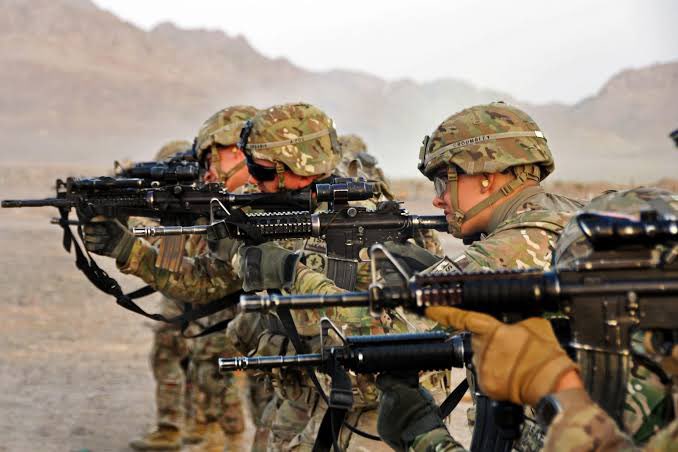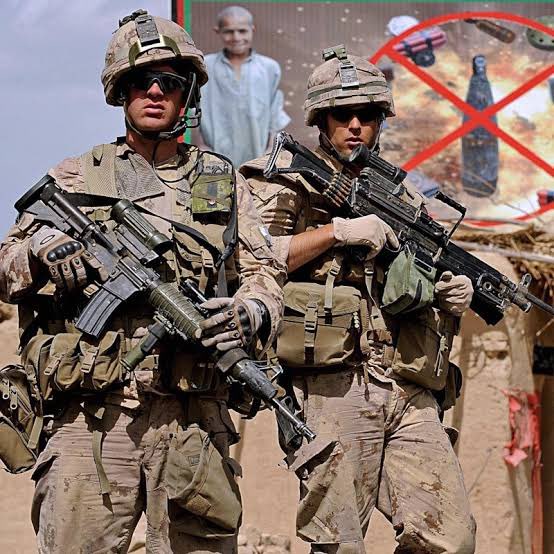Super brief overview of the what the US Army terms ‘enhanced projectile rounds’, how they came to be, what they are & aren’t, what they do, the problems they caused & solved, & how EPRs became the default standard round in the US Army. 1/ 







Standard caveats, this is an overview, generalisations are made in good faith, only public domain information is sourced or used, wherever possible, I’ve referenced US Army public domain information, not internet opinion…though this is one! 2/ 

I apologise in advance for the sheer number of projectile cross sections this thread will contain. 3/ 

By 1980, NATO had adopted the 5.56 x 45mm SS109 cartridge as standard. Unlike M193 round used by the US in Vietnam, SS109 tightened up the rate at which a barrel’s rifling completed rotation from 12” to 7”. The projectile also changed significantly; incorporating a penetrator. 4/ 



SS109, like a lot of NATO standards, was intended to be a bit like a tech data pack. Participating nations could use the information to develop their own complaint versions & produce them domestically. In the UK, this round was the L2A2, in the US, M855, aka ‘green tip.’ 5/ 



As the Cold War progressed & came to a close, M855 was deployed & employed in Panama, Kuwait, & Iraq. ‘Twas Somalia from December 1992 that battlefield reportage of M855 underperformance first appeared. Inconsistencies in lethality identified couldn’t be replicated in testing. 6/ 







So, bureaucracies do what bureaucracies do & discounted the information from the field. It should be noted that the corollary of a lot of countries using a standard projectile is that underperformances experienced by one are broadly applicable to all. 7/ 

To be clear, there’s no implied conspiracy or malicious intent here. Tests that led to adoption of SS109 assured all the projectile was consistent, with reliable terminal effects. The odd one out was battlefield reportage. Repeating existing tests generated the same result. 8/
Coincidentally, late 1995 saw US Army Armament Research Development & Engineering Center form a joint working group to explore non-toxic ammunition. SS109/M855, like M193 before it, contained lead. Rounds expended in training were putting heavy metals into training facilities. 9/ 

Fast forward to 2003 onward. Battlefield reportage of inconsistently performing or insufficiently lethal M855 were not longer isolated. M885 projectile performance remained consistent when tested. Maybe the test setups weren’t reflective of the battlefield realities? 10/ 







After >20 years, the industrial inertia of M855 was considerable. The opportunity presented by the non-toxic ammunition working group & associated funding line was difficult to ignore. Address the performance shortcomings of M855 *and* reduce heavy metals usage. 11/ 

Skipping over the wave tops a bit, the Enhanced Performance Round was the result. Adopted as the M855A1, EPR retained the 62 grain mass of the M855 (well, 55-62 gr), but changed most everything else, notably removing lead. 12/ 





Changing tack for a sec, M16A2 (1983, USMC) has a rate of twist of 1:7, from 1:12 of the M16A1, & designed to use M885. The M4 carbine (US Army, 1994) also used a 1:7 barrel for the M855, but was 5.5” shorter than the A2: compromises to performance were deemed acceptable. 13/ 

Without going into even more tedious explanations of how the EPR performs better than SS109, I’ll cover off with this: problems identified during battlefield use of M855 disappeared when units converted to M855A1. EPR also resolved the compromises of the M4’s shorter barrel. 14/
EPR uses three-part projectile consisting of a steel penetrator, a copper slug, & a reverse-drawn copper jacket. There’s no lead in the projectile, addressing the primary concerns of the ammunition toxicity working group. 15/ 



Back to 2010: US Army rolled out a new round into an existing fleet of small arms. Whilst the target effect of the new round was impressive, it caused issues with the legacy fleets pf small arms. Not a surprise as wartime-developed round, EPR solved one problem - lethality. 16/ 





The exposed steel penetrator did bad things to carbines & machine guns, gouging out feed ramps, wearing out barrels, damaging magazines, & other sundry badness. EPR was also ‘hotter’, upping parts wear & tear. None of these issues were catastrophic, but did require management.17/ 



The success of EPR can be assumed thanks to a number of factors. Programs to replace legacy 7.62mm M80 ball with M80A1 EPR, as well as 5.56mm M856A1 tracer & 7.62mm M62A1 tracer commenced. EPRs aren’t armour piercing rounds, though they can defeat protected targets. 18/ 

Rapid fielding of EPRs also informed the approach to the then-nascent Next Generation Squad Weapon (NGSW) program, where a common projectile, broadly similar to EPR, was given to firearms & ammunition manufacturers so that both could be developed concurrently & competitively. 19/ 



This concurrent approach means that problems, issues, or differences that EPR created in legacy platforms would be avoided in the competing ammunition & platform solutions. 20/
US Army has some infantry systems that is consider its Crown Jewels. These are systems that give its soldiers such a qualitative capability advantage over potential adversaries that they’re only available government to government, & even then only to the closest of allies. 21/ 



To date, only Australia has adopted M855A1 EPR. There’s anecdotal reporting that the UK & Canada has evaluated & rejected EPR due to unspecified concerns about compliance with Law of Armed Conflict, but I can’t see any official comment on confirm the veracity of this. 22/ 

So, M855A1 EPR. Like anything ‘new’ & a bit different, it’s often misunderstood & misreported. As it seems to share characteristics with the new 6.8 x 51mm General Purpose projectiles from NGSW, issues experienced fielding EPR are often conflated with what may come with NGSW. 23/ 





Now over a quarter of a century old in terms on conception, & approaching a decade & a half of realisation, EPR & GP are the US Army’s solution to enhancing the lethality of its individual soldiers on the battlefield. 24/
• • •
Missing some Tweet in this thread? You can try to
force a refresh
































